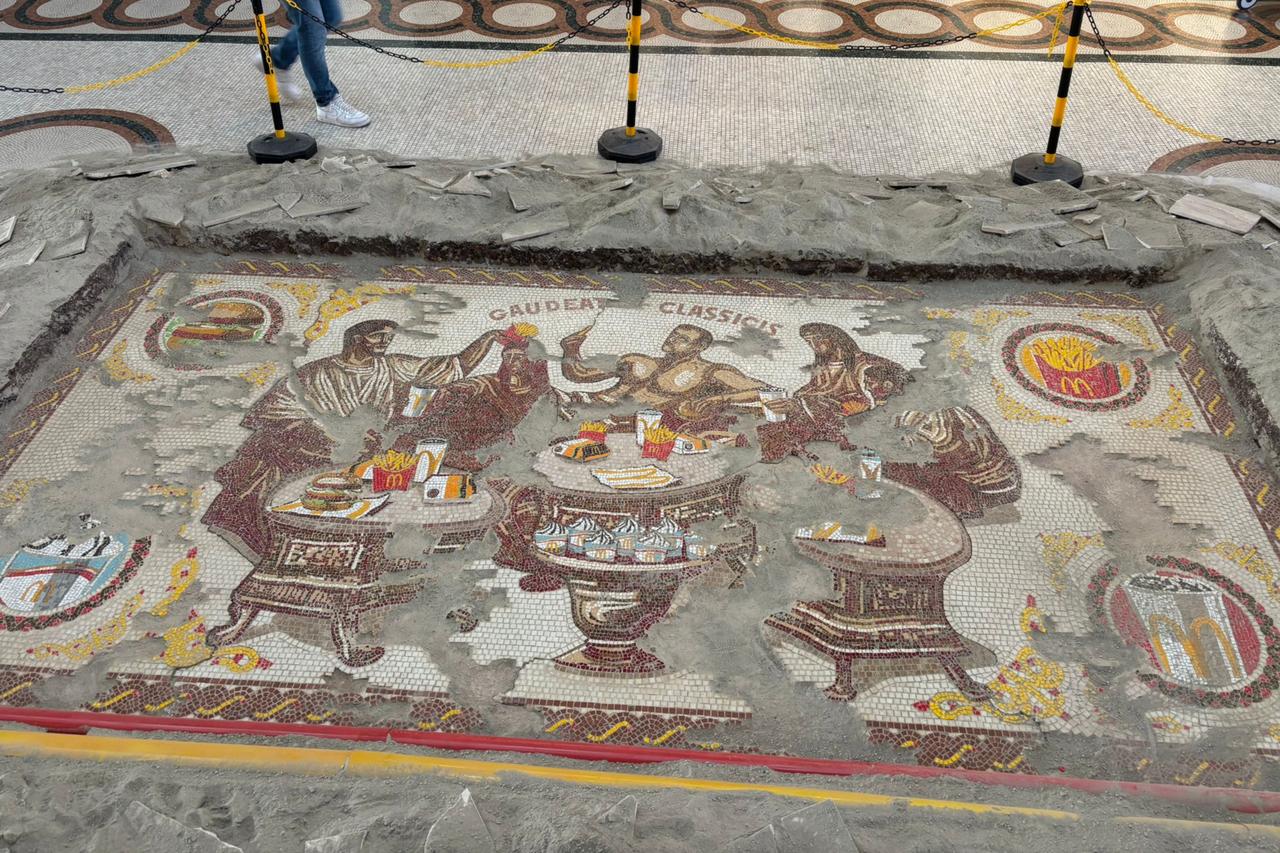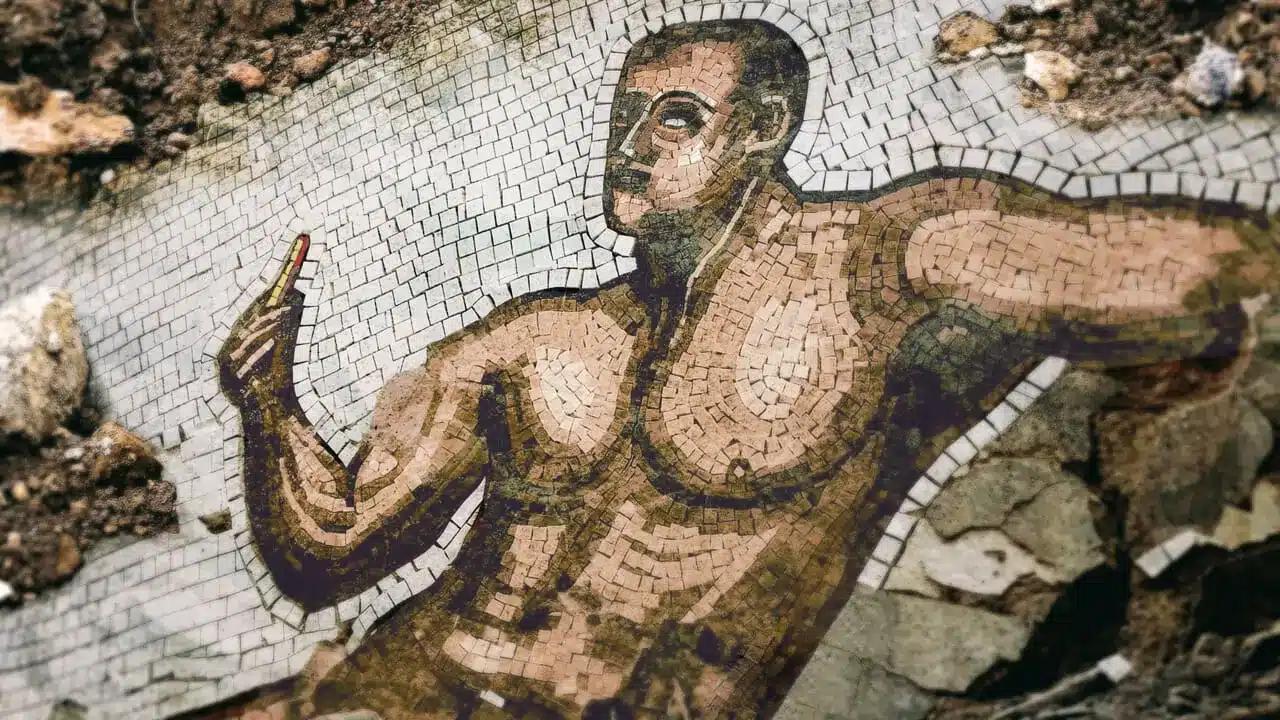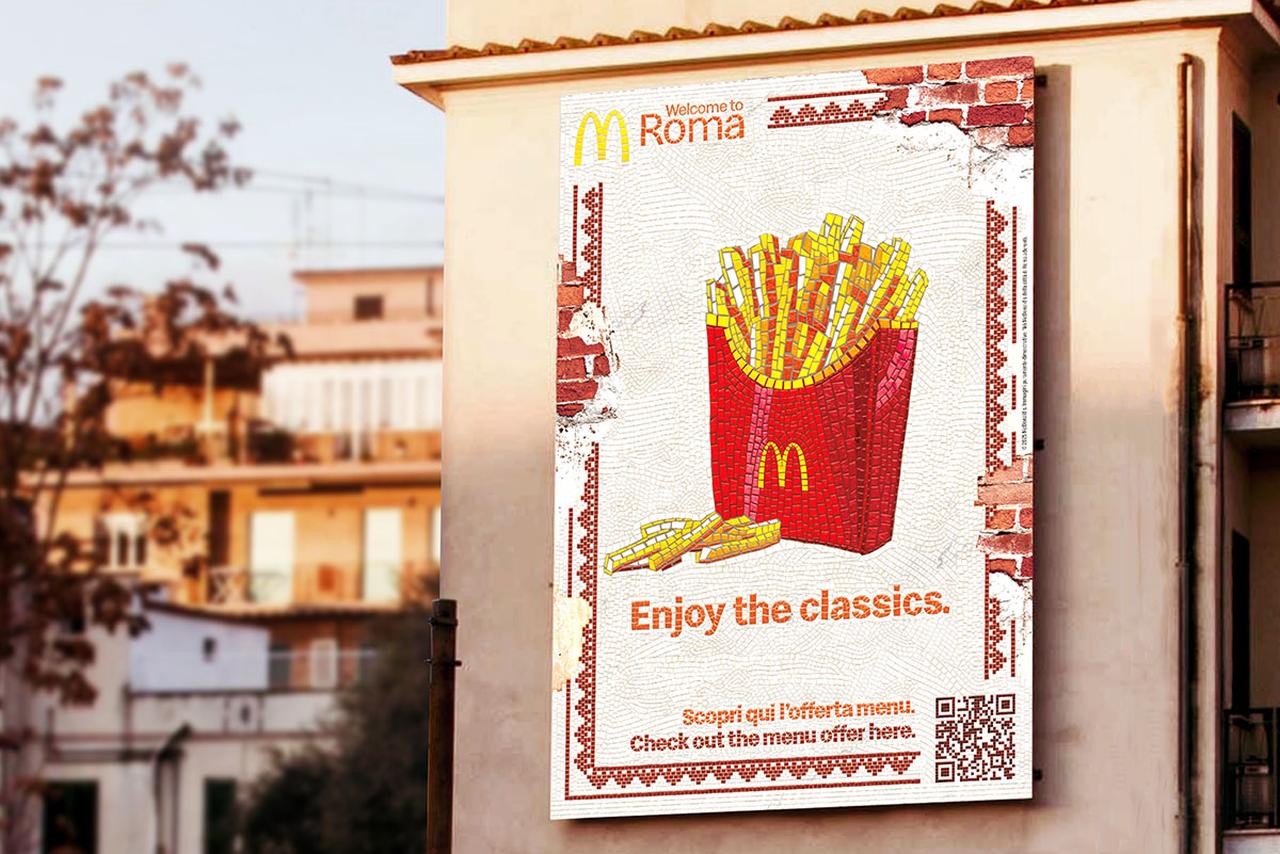
In a move that has stirred both curiosity and controversy, McDonald's recently unveiled an eye-catching mosaic installation in Rome’s Galleria Alberto Sordi. Styled to resemble an ancient Roman artwork, the mosaic depicts togate figures dining on fast food, blending imperial iconography with unmistakable modern branding. Positioned near historic landmarks such as the Antonine Column and the Italian Parliament, the piece has drawn sharp attention from archaeologists, art historians, and the general public alike.
To explore the deeper implications of this marketing initiative—particularly its ethical, cultural, and legal dimensions—we solicited insights from three leading Italian scholars: Professor Pier Matteo Barone from American University of Rome, Assoc. Professor Alessandro Vanzetti from Sapienza University of Rome, and Professor Paolo Coen from Sapienza University of Rome. Their responses offer a measured and multifaceted view of a campaign that blurs the boundaries between art, heritage, and advertising.

According to archaeologist Professor Pier Matteo Barone, the mosaic has sparked mixed reactions in Italy. “While some in the archaeological and museum communities view it as a light-hearted provocation,” he explains, “others have raised concerns about the potential trivialization of heritage.” Italian media coverage has echoed this divide, with Il Messaggero and La Repubblica offering contrasting takes—one noting its viral appeal and the other questioning its cultural significance. Professor Paolo Coen adds that while he does not speak for broader public opinion, the image's aesthetic is more likely to generate a momentary tourist buzz than lasting discourse.
In contrast, Assoc. Prof. Alessandro Vanzetti reflects on how the mosaic might be interpreted differently in situ, suggesting that its placement near significant political and historical sites adds a layer of contextual complexity. He believes that without witnessing the installation firsthand, its full symbolic resonance remains elusive. Nevertheless, he recognizes the piece as part of a broader pattern in Rome, where Roman imagery has long been co-opted for commercial and decorative purposes.

None of the respondents view the mosaic as a case of cultural appropriation in the conventional sense. Prof. Barone argues that it plays “with forms rather than meanings,” highlighting that Roman art has been reinterpreted across centuries—from neoclassical revivalism to modern fashion campaigns. The mosaic, in his words, offers “a tongue-in-cheek visual metaphor” about modern consumerism, deliberately anachronistic and potentially thought-provoking.
Prof. Coen echoes this sentiment by noting that the installation demonstrates “the enduring strength and relevance” of Roman visual language. He sees the mosaic not as a forgery but as an overt act of semantic manipulation—clearly staged and not intended to deceive. Assoc. Prof. Vanzetti, meanwhile, frames the campaign as a marketing strategy infused with a certain artfulness and perhaps even a nod to contemporary political satire, given the name “McDonald’s” and its coincidental resonance with figures like Donald Trump.
The ethical implications of using ancient motifs in marketing campaigns remain a key point of discussion. Prof. Barone acknowledges the importance of respecting cultural heritage in advertising but believes that in this case, the installation stays within acceptable boundaries. “It is not attempting to deceive but to entertain,” he says, “and perhaps even to educate through contrast.”
Prof. Coen is less concerned with ethical considerations, pointing out that the overtly manipulated visual language—complete with fast food items and exaggerated chromatic values—makes it clear that the mosaic is not authentic. For Assoc. Prof. Vanzetti, the installation merely extends longstanding commercial practices in Rome, where ancient imagery has been used by businesses for decades. He finds the mosaic more artful than offensive, noting that “if colleagues are offended, I would be more worried by the daily destruction and threats to heritage worldwide.”

On the question of public perception, the scholars offer varying degrees of optimism. Prof. Barone views such installations as possible “gateways” to deeper engagement with antiquity. Even a playful reinterpretation, he suggests, could spark curiosity about Roman lifestyles or diet. “If this mosaic leads even a fraction of its viewers to wonder what a real Roman mosaic looked like,” he argues, “then it has done something positive.”
Assoc. Prof. Vanzetti is more cautious. He observes that we live in a “capitalist world” where media-driven mimicry often blurs the line between fact and fiction. However, he trusts that most people recognized the mosaic as a parody rather than an authentic artifact. Prof. Coen, meanwhile, considers the image likely to fade into cultural obscurity, provoking little more than a few laughs or eye-rolls before being quietly dismantled.

All three scholars agree that the mosaic installation does not violate Italian heritage laws. Prof. Barone points out that the Codice dei Beni Culturali e del Paesaggio primarily governs authentic heritage sites and objects. Since the mosaic is a modern creation displayed in a private commercial gallery, it likely falls outside these regulations.
Prof. Coen affirms there are no legal grounds for action, while Assoc. Prof. Vanzetti highlights the distinction between mimicry and forgery. “Here there is not a transformation of a real scene,” he notes, “but just mimicking.” This distinction places the mosaic firmly within the bounds of artistic expression.
The McDonald’s Roman mosaic installation in Rome may never achieve critical acclaim, but it has undeniably ignited a thoughtful dialogue among cultural scholars. While some critics may dismiss it as kitsch or even vulgar, academic voices suggest a more nuanced view: it is not cultural appropriation, but a contemporary engagement with antiquity—artful, absurd, and ultimately ephemeral.
As Prof. Barone puts it, “Culture thrives on dialogue.” According to advertising experts, This installation, for all its commercial underpinnings, has succeeded in prompting that very dialogue—between past and present, high art and popular culture, satire and heritage.